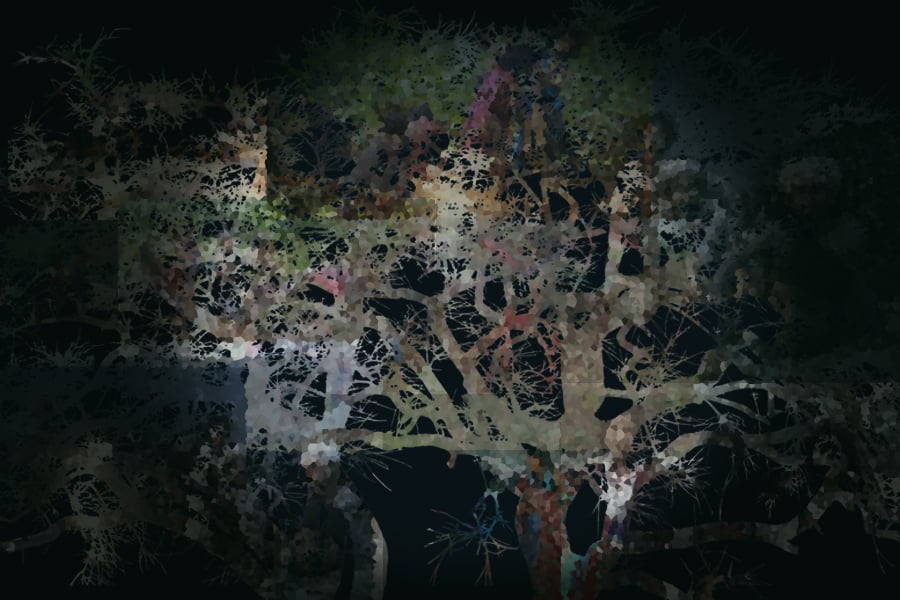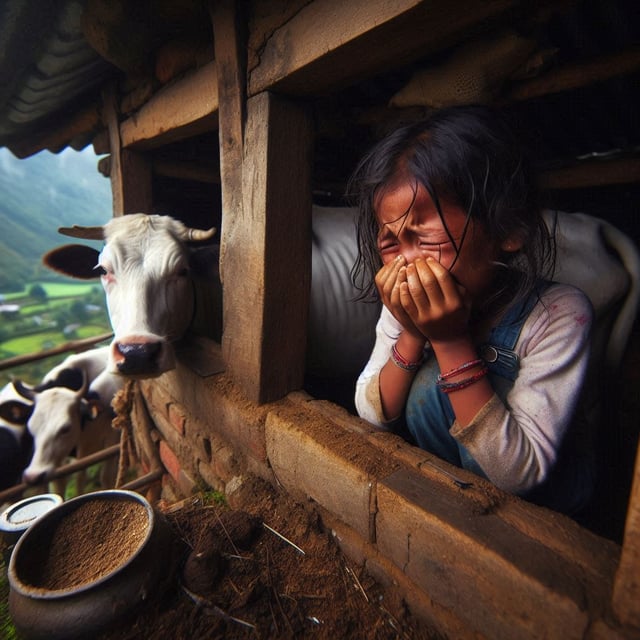Raute: The King of Jungle

Raute, a nomadic community, maintains a primitive way of life. The community is not completely isolated from human civilization as they make wooden bowls and other forest products to trade them with other goods with the modern world.
They are the only few remaining hunting tribes that use nets to hunt land animals. Hunting and carving are conducted by men and gathering is done by women. They feel unlucky if villagers observe them during the hunt or while eating the game.
Raute wear their traditional attire, and survive through hunting and gathering- the visual images look exotic and extraordinary as a result many photographers and videographers have covered their story.
They would change their location as soon as someone died and would burn their settlement before they left. As a result, they continued their nomadic lifestyle and lived in tents.
Two decades before, their lives were pleasurable as they would carry utensils made of wood and visit door to door to exchange them for food and vegetables. In the wooden box created by Raute, the grains would need to be filled to the top to barter the bowl with the grains, and if there is a lid, the grains must overflow.
They used to appear in better conditions in protein-deficient areas, and would not be afraid of famine and indebtedness that farmers suffer. They have a leader whose only power is to manage internal and external conflicts and deal with villagers. The aged look after children after they couldn’t conduct difficult work. Respecting them doesn’t influence their ability in group making.
Raute worships two gods, Bhuyar, the god of hunting, and Dare Mastah during times of illness. Apart from them, they also worship Ban Devi and Ban Jhankri if they cause illness.
As Raute can’t find timber, they are having a hard time creating kitchenware items for trade; they are losing their traditional way of life.
Guras Rural Municipality distributes a social security allowance of Rs.4,000 to Raute residing in Chhedagad Municipality-5. This has allowed them to celebrate Hindu customs while their death ritual is different than Hindus.
The monthly allowance has enabled them to leave their craft but is contributing to the rising issue of alcoholism. Their culture and tradition are on the verge of extinction as they neither go hunting nor visit the village for food- they have gone mainstream as they slaughter goats like others do and prefer chicken.
The forests have thinned across the district, and their settlements are gradually transforming into towns. Dashain has been costly for Rautes as they confirm mainstream culture. The government allocates a budget for them, and yet they are poor- they depend on begging.
The Karnali State government has been working to distribute citizenship to the nomadic Raute community with a population estimated at 146, which was based on the identity cards issued to them in the Guran Rural Municipality.
There are myths that Raute has effective magical powers and spells they use to catch monkeys and they would enchant humans, especially women if they are found in small numbers. There are also rumors that they kidnap small kids and offer human sacrifice to forest gods.
Raute girls typically marry at about 15-16, while men marry between the age of 20-25. They abstain from sexual relations before marriage and maintain a monogamous life, but will remarry if the wife dies. Sons and daughters receive an equal share in utensils, reflecting their equal rights.
The 143 Rautes, despite having a culture to migrate after the demise of their family member continued to live in Damar, Gurbhakot Municipality, Surkhet for ten years. However, two young girls from the nomadic tribe got drunk, taken to a hotel, sexually abused, recorded the incident, and video made public through Facebook by local youths. As a result, Raute decided to shift their settlement to Gurbhakot while the youths and the hotel owner served jail sentences and fines.
After the incident, the Karnali Province introduced a policy to prohibit outsiders from entering the Raute settlement and a one-door policy for relief distribution while protecting their norms, values, and culture.
The nomadic community is a vulnerable group that still offers insight into how humans lived before the civilizations started. These exotic communities found in remote parts of Nepal can provide amazing stories about the exotic life on our planet.
Author
Kripendra Amatya, Researcher, Nepa~laya Productions
Editor
Dana Moyal Kolevzon, Director of International Relations, Nepa~laya Productions
Published Date
January 1, 1970



